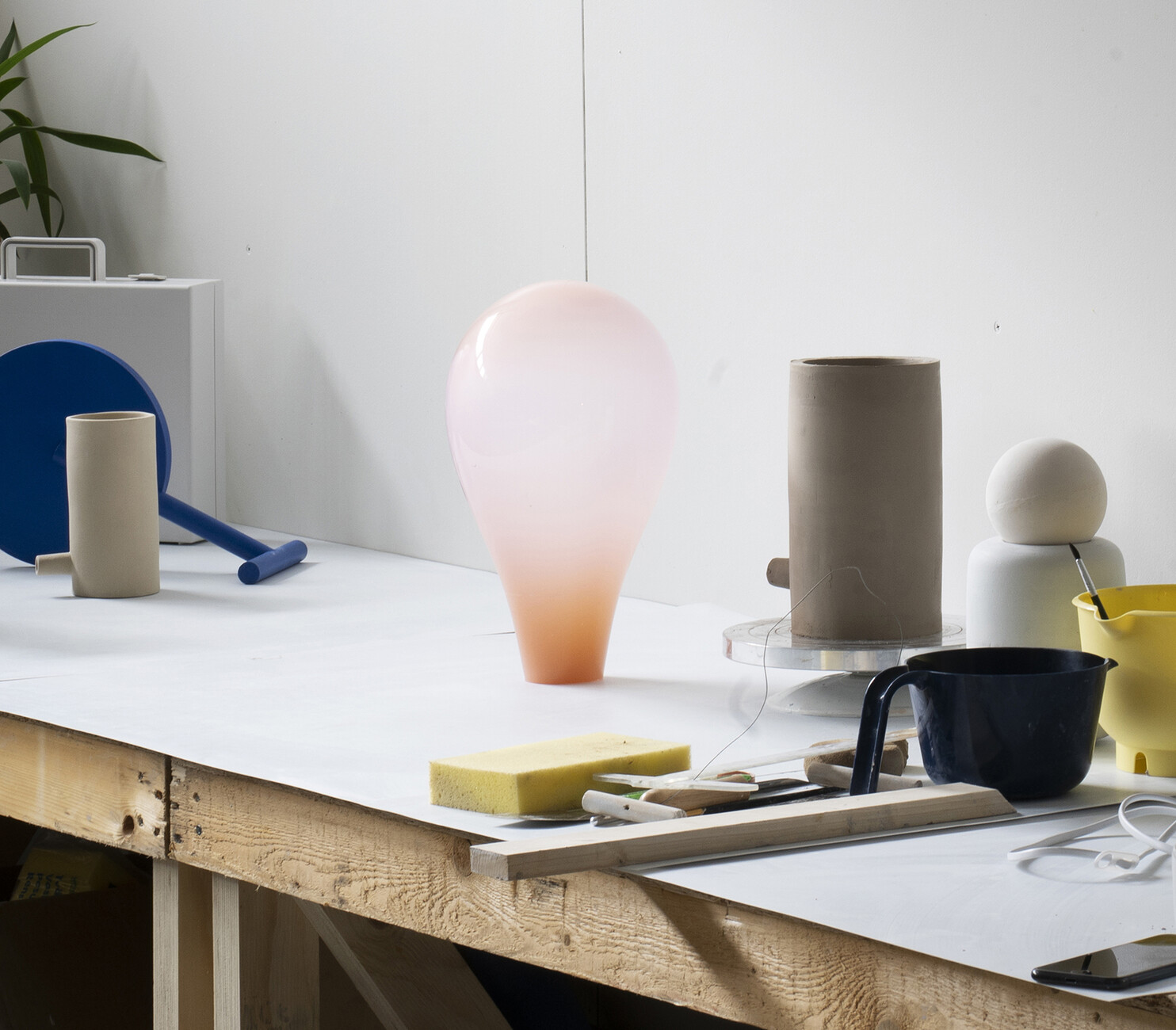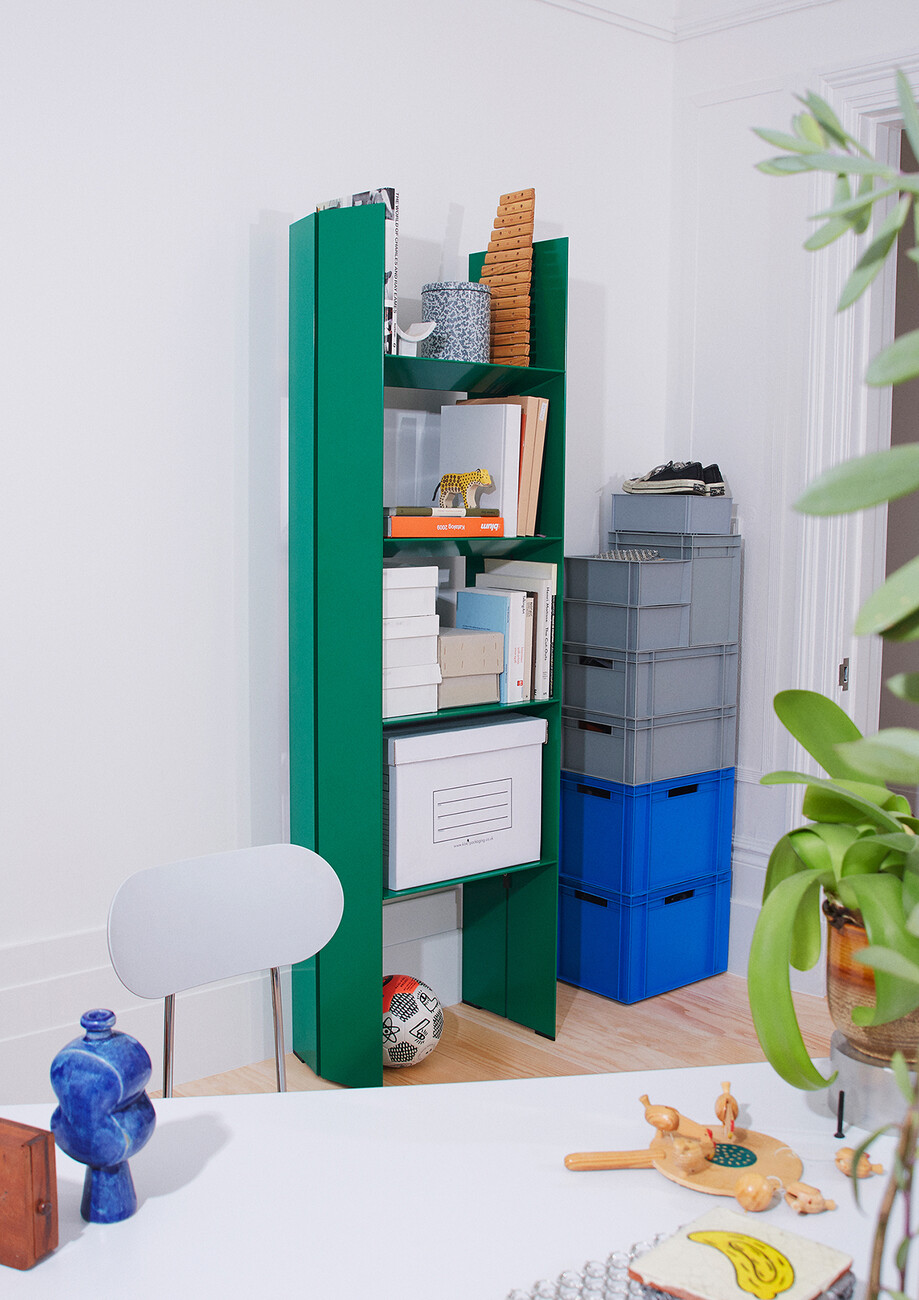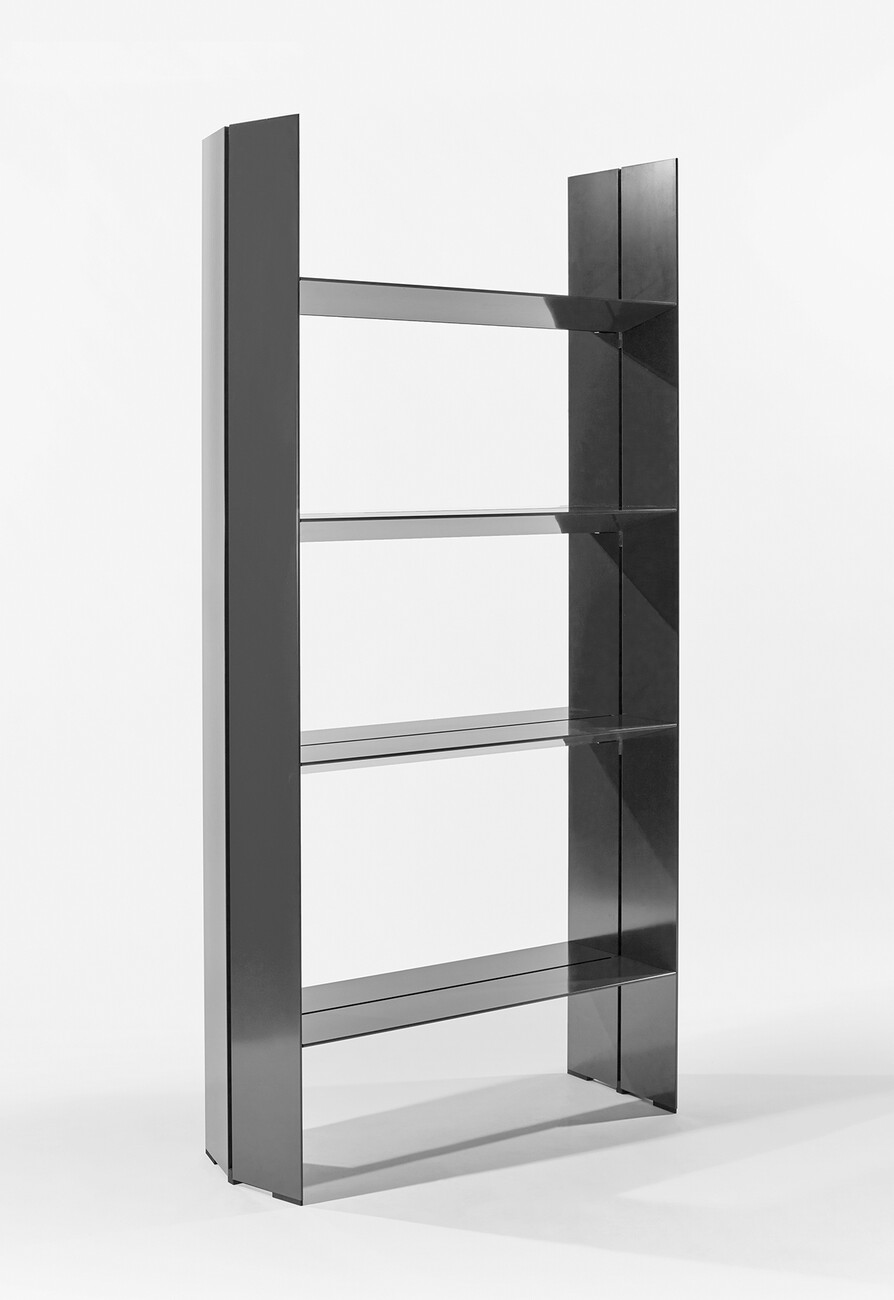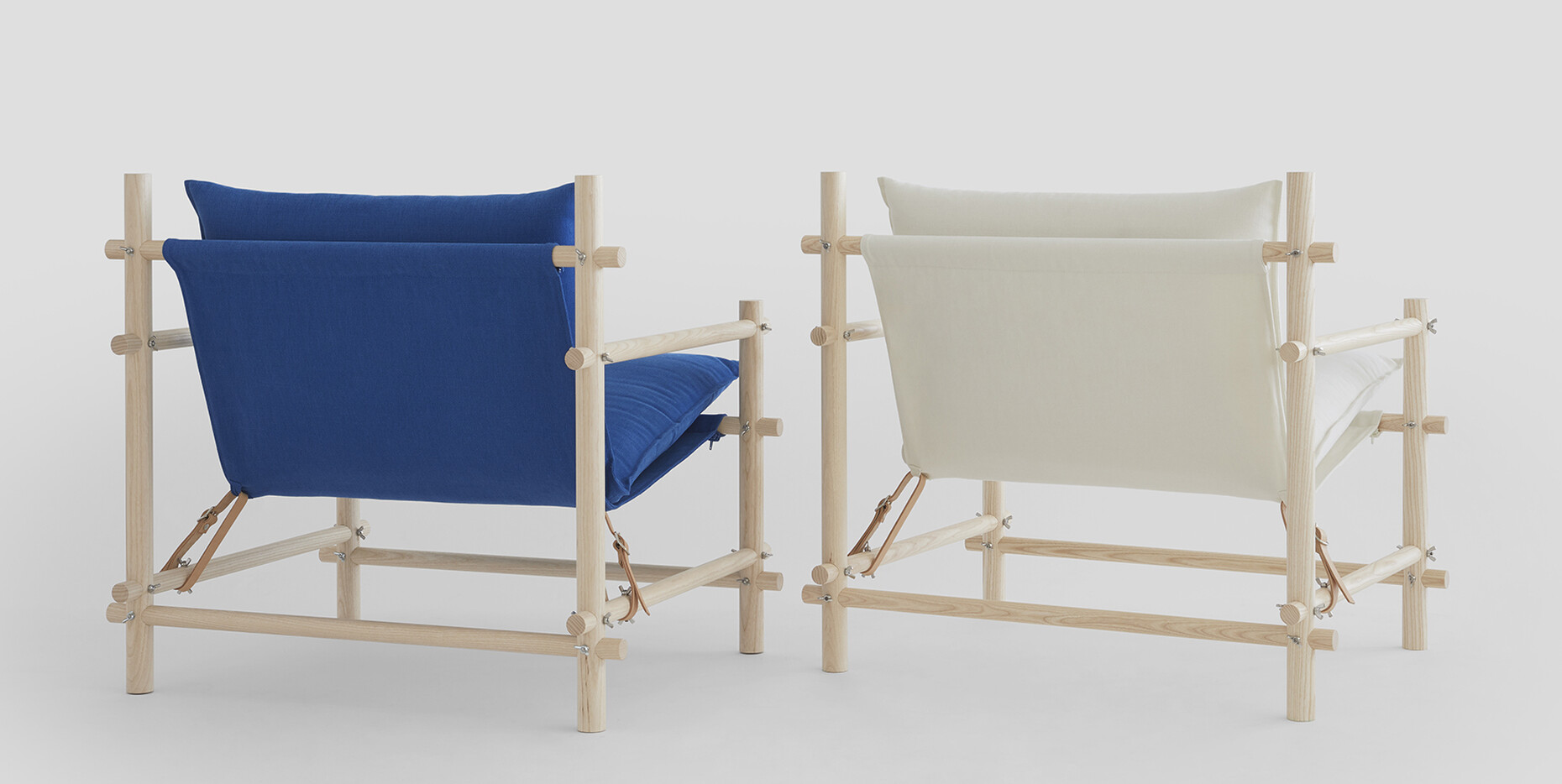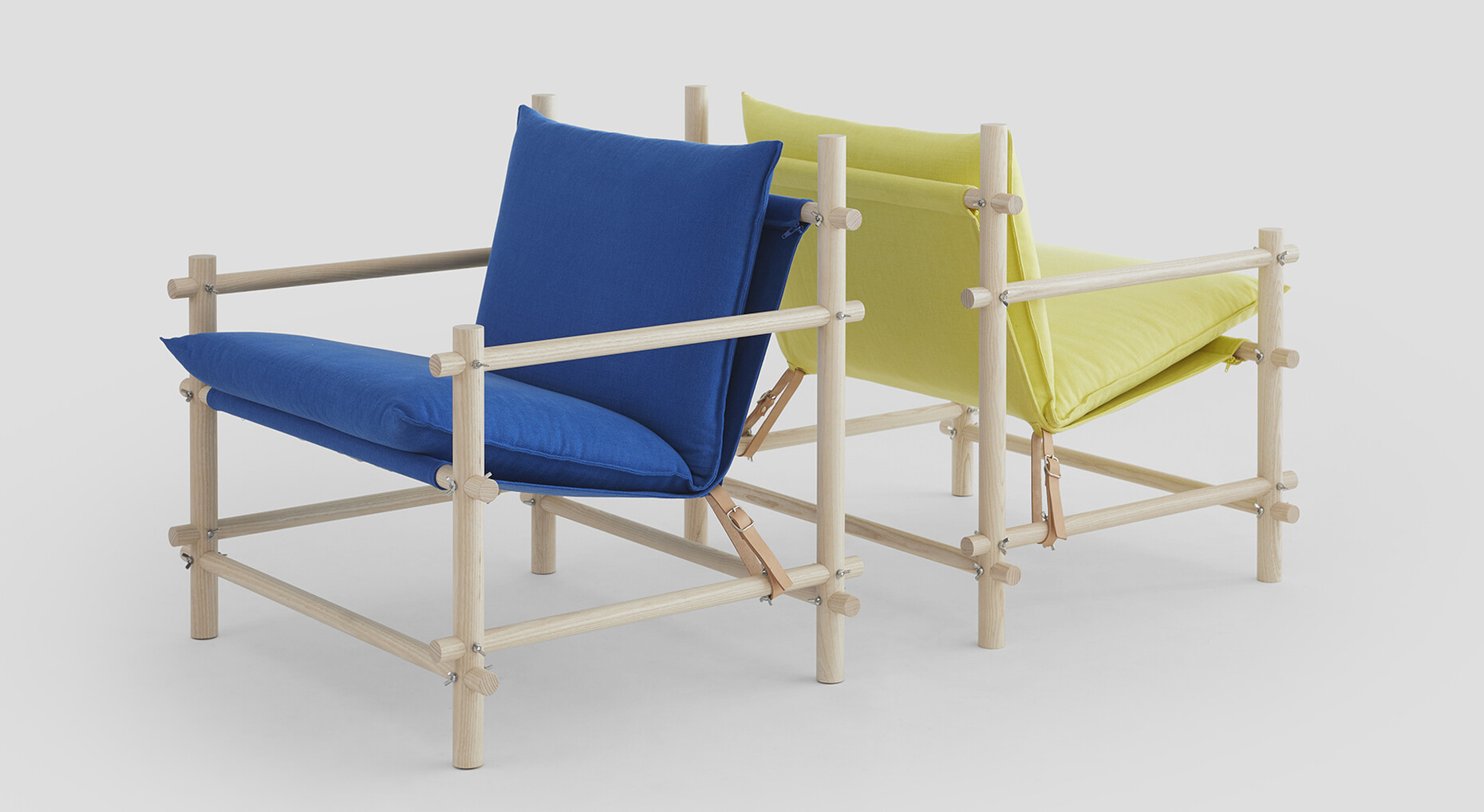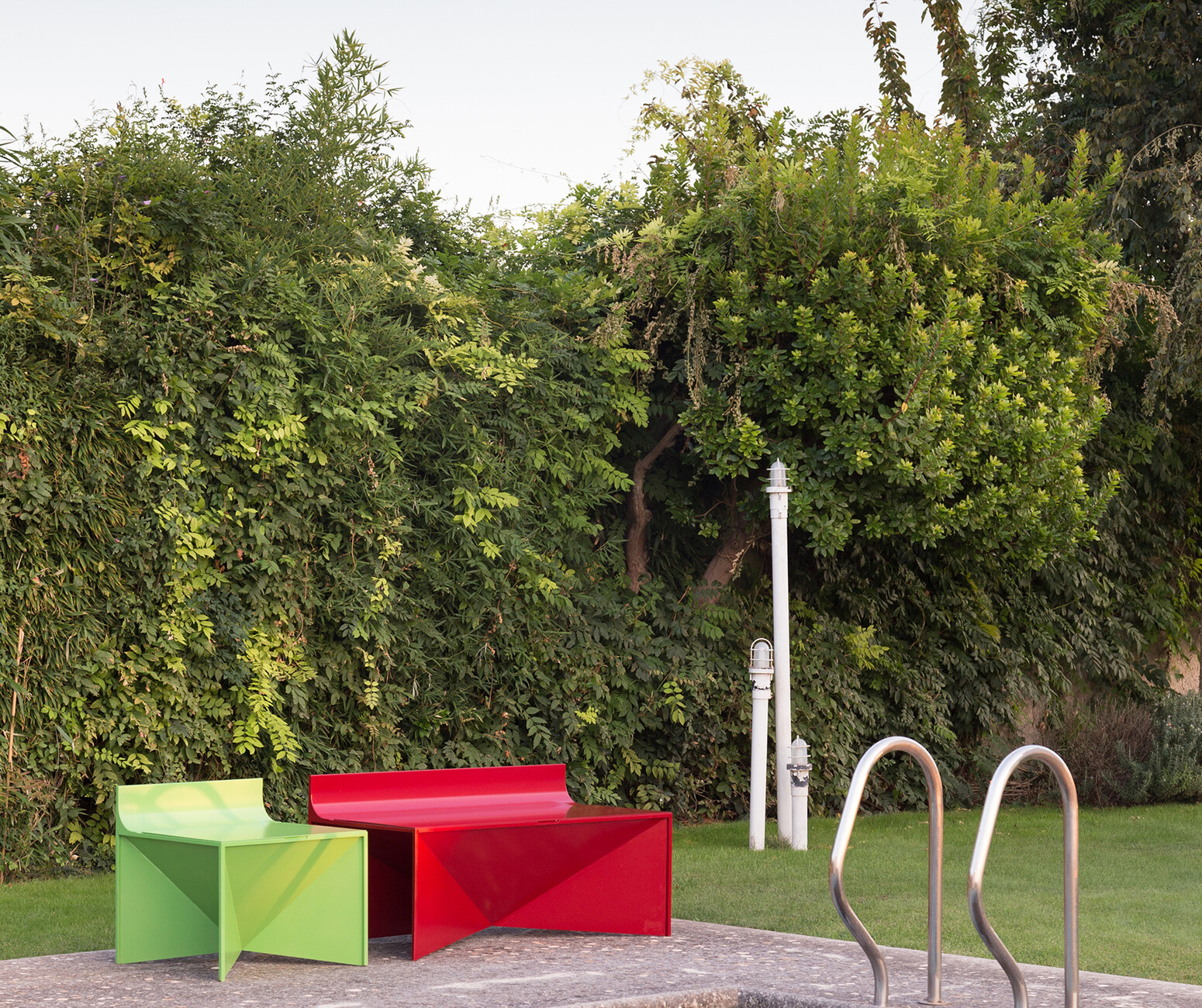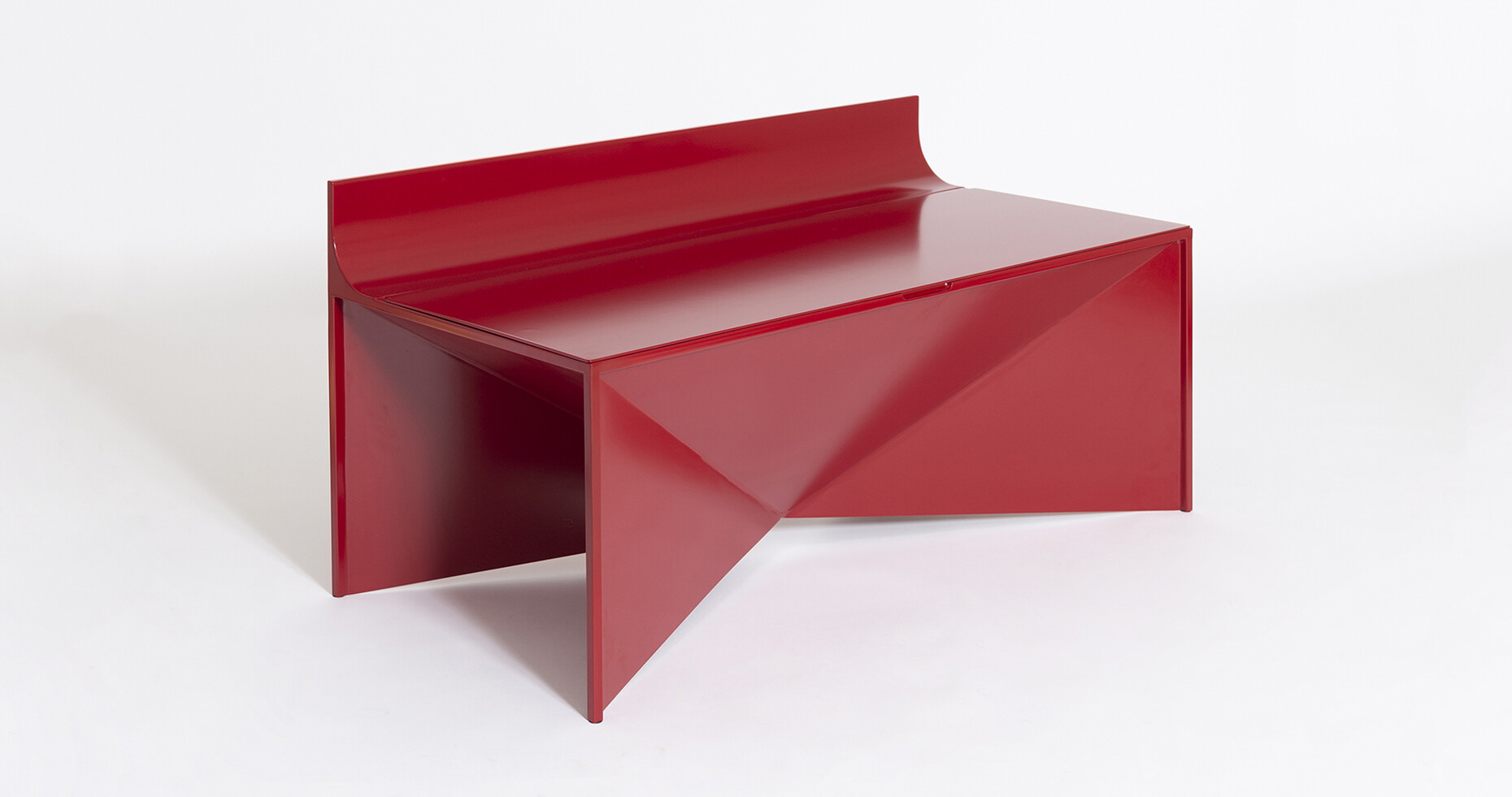Reflective and discerning
The designs by Erin Turkoglu are objects that you immediately want to explore through touch. One example is her “Pillar” vase, with its slightly uneven surface and its almost two-dimensional appearance that makes it look like a drawing. This wayward character is likewise evident in the handheld “Paddle Mirror”, whose slanted position gives it an appealing presence. “I’m often guided by the materials I’m using. On the one hand, I shape the material according to my ideas, while on the other I allow the material, in turn, to do what it likes,” says the designer, explaining the work process with which she creates her poetic objects.
Since childhood, she has been magically drawn to crafts, materials, colors and art. It became clear to her early on what direction she would later want to pursue. And so Erin Turkoglu studied product and industrial design at the Üsküdar American Academy in Istanbul, the Pratt Institute in New York and the Aalto University in Helsinki. “What I most enjoy is trying out new things: a craft, exploring a new place, a new material,” remarks Erin Turkoglu on her joy in experimentation. This exploration of the interstices of art and design, of object and sculpture, is also clearly evident in the works under the title “Loop”, whose loops of ceramic look like soft rubber tubes at first glance. It’s an object you want to touch and whose playfulness is downright captivating. The way of playing with the senses, the randomness of craftsmanship both make Erin Turkoglu’s objects suitable for small series – a decision the young designer makes consciously: “Part of the industry values small series, limited editions and collectors’ items more than ever. For designers like me who are interested in working somewhere between art, sculpture and function, that’s a positive development.”
Valerio Somella is a reflective thinker: He closely observes the changes in the furniture industry, which naturally go hand in hand with the new conditions for young designers. “The number of pieces produced has fallen markedly, and with it also the income for designers through royalties. Meaning it’s all the more important for me, too, to develop products that do not rely on short-lived appearances,” says the Milan native, describing the intention behind his designs. And undoubtedly, some of his designs belong in the “timeless” category – despite a certain obstinacy. One example is the “Penta” lamp: Valerio Somella took inspiration for this design from the suspension for fishing when the angler does not want to hold the rod in his hand. He transposed this simple construction to an elegant lamp that subtly masters the balance.
It was back in 2009 that Valerio Somella, who studied product design at the Politecnico di Milano, set up his studio in Milan – and he can now look back on a long list of collaborations. For Alessi, he developed functional pieces of jewelry: The bottle opener becomes a pendant and, with its soft shapes, is something to touch and feel that you don’t want to let go of. For Cantarutti, meanwhile, he designed an armchair and pouf in “Hyppo”, which are up to standing the test of time. “For me, it is always enriching to get involved in different areas, especially lighting, where technology likewise plays a major role. That’s why this profession remains constantly exciting for me.” His curiosity is evident in the breadth of his works, which range from technical appliances to rugs. As a lecturer at various design schools, he is also inspiring the young generation to discover the industry’s “blank spaces”: “The profession of ‘design’ is like a sponge that is always changing. Its surface grows as a result of new technologies and thus new fields of activity and scope for creativity arise. So by no means everything has yet been designed!”
It is almost four years since Alexandra Gerber set up her own studio in London. Previously – after studying at the ESAD in Strasbourg and the ECAL – she worked for icons like Tom Dixon and Nitzan Cohen. The young designer developed a fascination for industrial manufacturing at an early age: “My grandfather opened a hinge factory in Austria in the 1950s with cutting-edge, fully automated production lines. So from an early age I was able to see how raw material is transformed into an end product. And ultimately, that’s what I do now, too.”
In fact, the matter-of-fact modesty of this last statement does not really do justice to the precise, innovative and ambitious work of the young designer. Her “Up” shelf is appealingly simple yet cleverly thought out: With just one small lever, the shelf surfaces can be adjusted to any height. “I find it fascinating to transform existing manufacturing processes into new products. That led me to take a joint system used in windows to make the Up shelf. Or to use the manufacturing process of car windows to make picture frames. The interesting thing here is that you expand the product range of a factory,” Alexandra Gerber remarks. With “Up”, the designer developed an independent aesthetic that shakes visual habits out of their naivety somewhere between archive and workshop, between office and living. In all her work, she focuses on using materials that are easy to recycle or have already been recycled. “But I also try to work with producers who recycle their own waste and who use the heat generated by the production to heat their premises.” For all her high aspirations of function, sufficiency and sustainability, many of her designs are nevertheless united by a certain playfulness and ambiguity: The bench for Hermès turns out to be a kind of tiled stove on closer inspection, while “HB” is a versatile storage artist – be it in the bathroom, on the wall or on the table; for pens, flowers or other objects. It almost seems as if Alexandra Gerber is combining clarity and complexity with ease.
Giuseppe Arezzi is not yet 30 years old, but the works by the product designer have already won multiple awards and featured in numerous exhibitions throughout Europe. In particular the armchair “Manic#”, the hybrid model “Binomio” and the “Tramoggia” series are standalone yet sensitive designs that reflect a sympathetic yet elegant pragmatism. “I believe the role of contemporary designers is to introduce new processes in constant dialogue with producers,” says the young designer, explaining the challenges of his generation, for whom sustainability naturally plays an important role. This matter-of-factness is also clear to see in “Manic#”: The chair’s wooden rods are connected with simple wing screws, the textile seat cover is held in place by leather straps, and the whole thing can be dismantled with ease. The chair is impressively adaptable: Even with upcycled wood and textiles, it would lose nothing of its lightness and elegance. “When we produce a piece of furniture, for me it’s important that it is timeless and designed to last as long as possible. Here, simplicity and quality are two aspects of the Nordic know-how that are important to me,” says Giuseppe Arezzi, explaining the premise behind his design.
The designer studied at the Politecnico di Milano and runs his own studio in Ragusa, Sicily, as well as Milan. At the same time, he is a dedicated teacher at the IED in Como: “We have to encourage the new generations to be self-critical and honest, to commit to activism and consistency: Only this way can they survive in a society as complex as ours.” The complexity of the present day is likewise demonstrated in “Binomio” – in spite of the appealingly simple design of the piece – for it cannot be categorized in any familiar way. It is sometimes a table, sometimes a bench. Sometimes a shelf, sometimes a side table. Sometimes a workplace, sometimes a coat rack. It is a companion of change and thus a good marker of Giuseppe Arezzi’s understanding of design.

